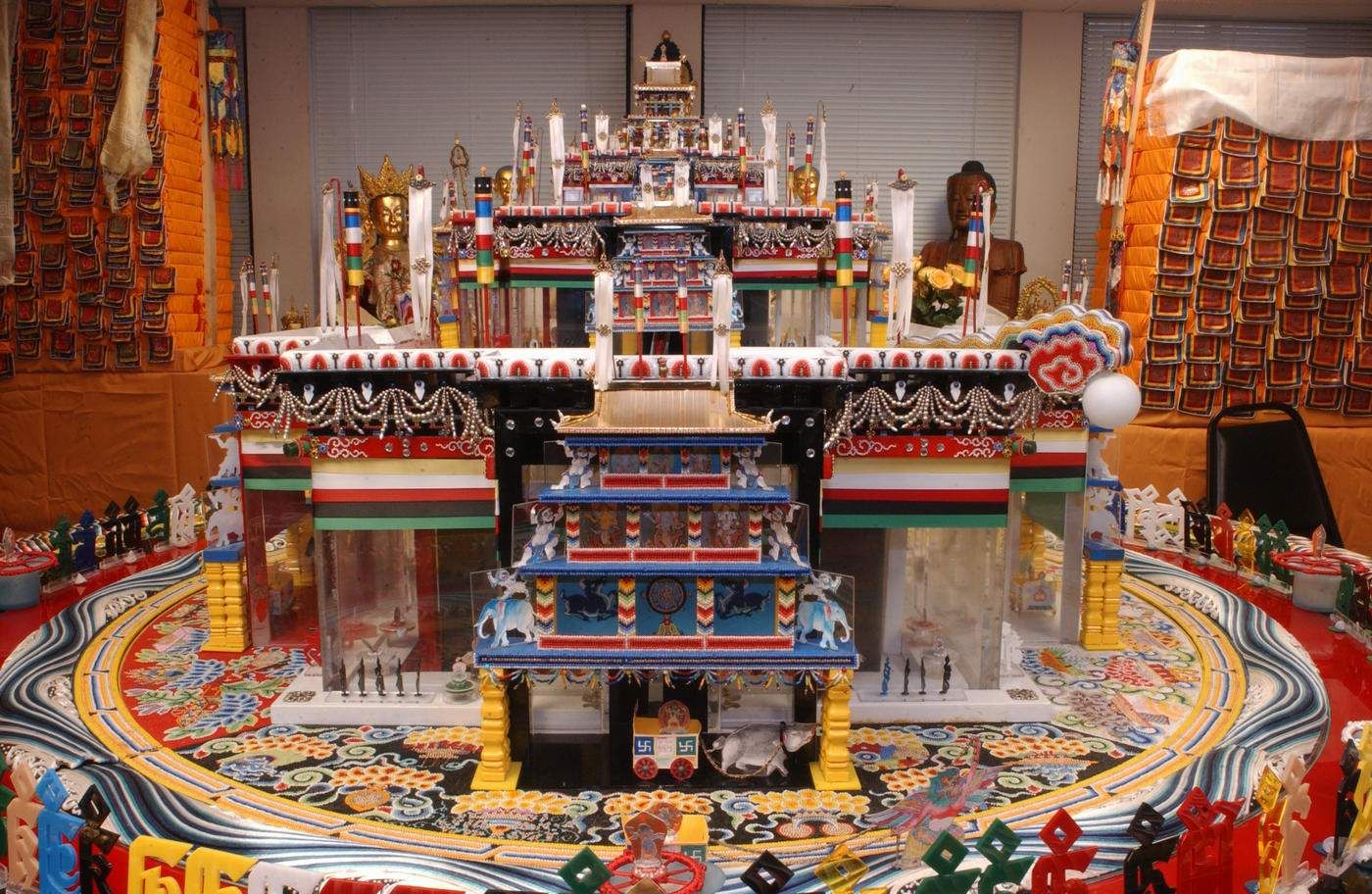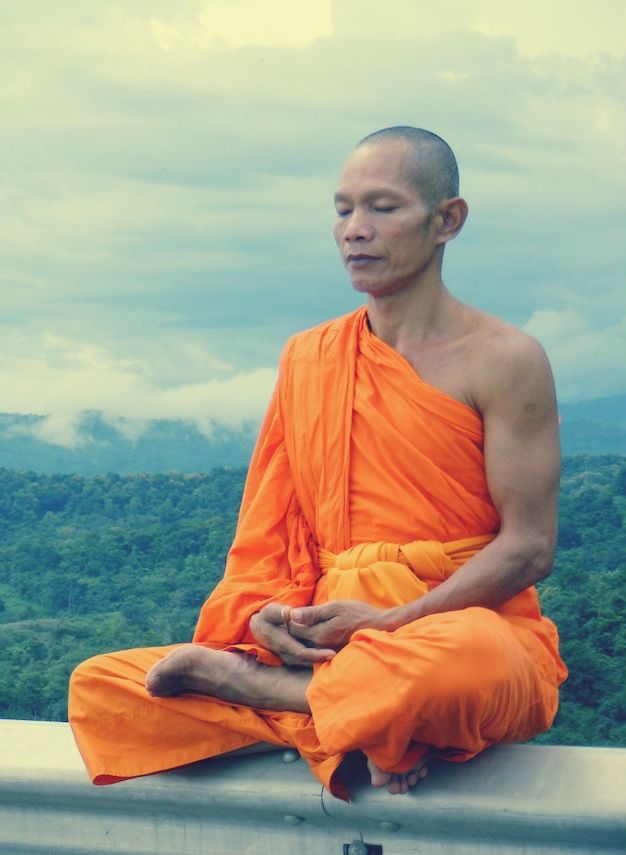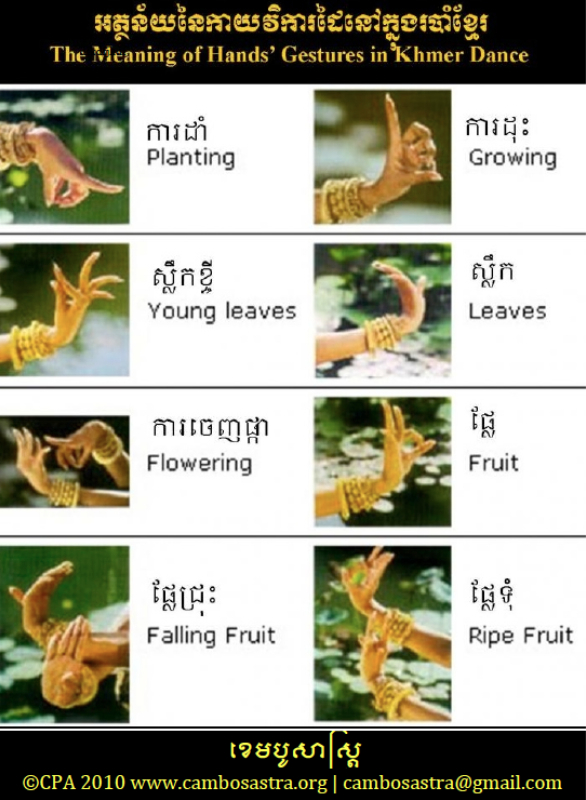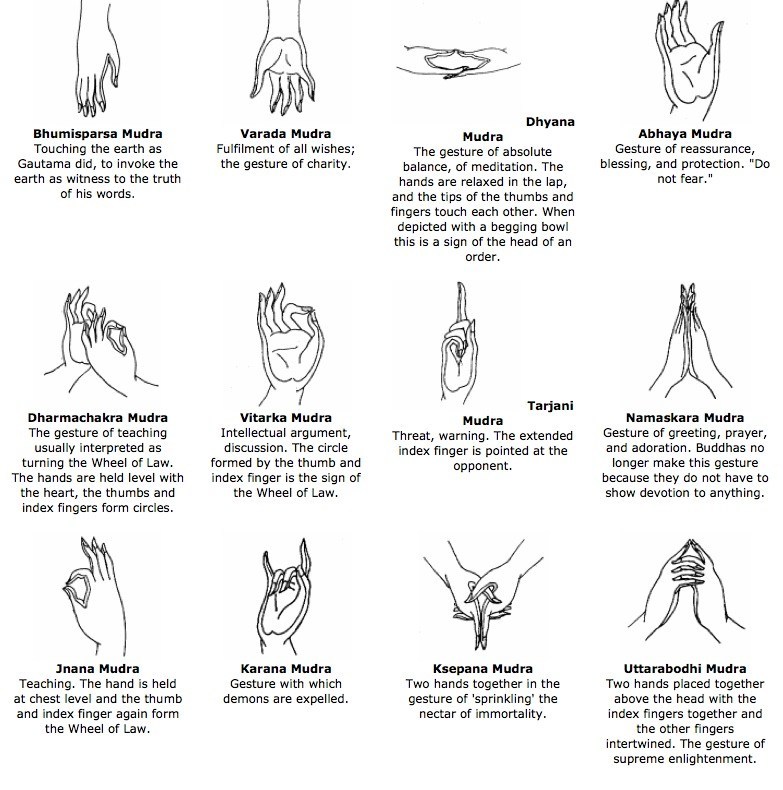Conegut també com a “El llibre tibetà dels morts” , és un conjunt d’instruccions a tenir en compte abans o just després de morir, pre evitar tornar a entrar en el seguit infinit de reencarnacions de vids de patiment, el samsara. Hauria estat escrit pel lama Padmasambhava al segle viii i després amagat per tal que fos descobert en el futur.
Les descripcions de les visions i presències de deïtats són d’una imaginació desbordant. La seva complexitat de detall demana l’ajuda de ser visualitzat com edificis i entitats en l’espai, un mandala.
- 1. Natural Liberation of the Nature of Mind: The Four-session Yoga of the Preliminary Practice.
Trobar refugi en certes meditacions. Mandala del mont Meru
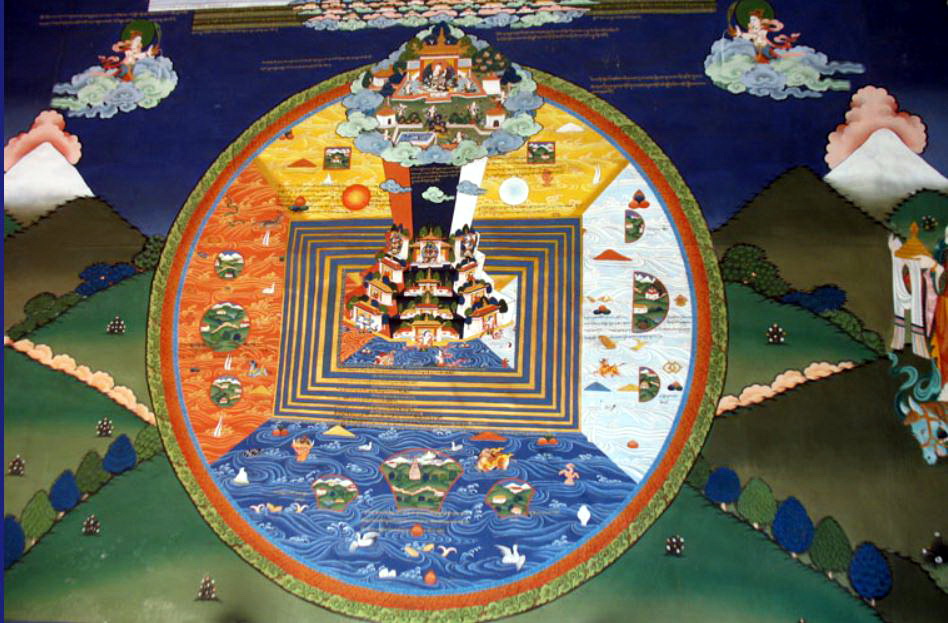
- 2 A Prayer for Union with the Spiritual Teacher, [entitled] Natural Liberation, without Renunciation of the Three Poisons.
- 3 Root Verses Of The Six Intermediate States.
According to this cycle of teachings, the circle of birth and death can be seen as being composed of six intermediate states. These six modalities of existence: our waking living state, dreaming, meditation, the time of death, and the two successive phases of the after-death state. - 4. The Introduction to Awareness: Natural Liberation through Naked Perception
Just like the nucleus of the sun, which is itself naturally originating. Look at your own mind to see whether it is like that or not!
Be certain that all that appears is naturally manifest [in the mind], Like the images in a mirror which [also] appear naturally. Look at your own mind to see whether it is like that or not! Be certain that all characteristics are liberated right where they are, Like the clouds of the atmosphere, naturally originating and naturally dissolving. Look at your own mind to see whether it is like that or not!
If, upon looking outwards towards the external expanse of the sky, There are no projections emanated by the mind, And if, on looking inwards at one’s own mind, There is no projectionist who projects [thoughts] by thinking them, Then, one’s own mind, completely free from conceptual projections, will become luminously clear. [This] intrinsic awareness, [union of] inner radiance and emptiness, is the Buddha-body of Reality, [Appearing] like [the illumining effect of] a sunrise on a clear and cloudless sky,. It is clearly knowable, despite its lack of specific shape or form.
Now follows the esoteric instruction which reveals the three times to be one: Abandon your notions of the past, without attributing a temporal sequence! Cut off your mental associations regarding the future, without anticipation!
There is no duality between the object viewed and the observer. Without focusing on the view, search for the observer! Though one searches for this observer, none will be found.
There is no duality between the object of meditation and the meditator. Without meditating on the object of meditation, search for the meditator! Though one searches for this meditator, none will be found.
There is no duality between the action and the actor. Without focusing on the action, search for the actor! Though one searches for this actor, none will be found. - 5. The Spiritual Practice entitled Natural Liberation of Habitual Tendencies
[Visualització de deïtats que bloquegen les tendències naturals que ens fan seguir en el cicle]
This divine assembly of the awareness holders will emerge from the throat [centre], And fill the space before us. Amidst a plethora of musical sounds they will manifest in myriad dancing postures, Pounding and vibrating throughout all world-systems, [And generating] a vibrant beaming path of light, Indicative of spontaneously arising pristine cognition. [ fa pensar en les assemblees beatífiques del cel de Dante ]
In the central channel branch of the skull, within one’s brain, Amidst an expanse of light, composed of naming seminal points of rainbow-light, [Stands] Samantabhadra in the form of Mahottara Heruka. He has three faces: brown, white and red; and six arms: The three right arms brandish a vajra, a khatvariga, and a small drum, And the left hold a bell, a blood-filled skull, and a noose of entrails. Mahottara Heruka is joyously and indivisibly embraced by Krodhesvari. May these two, the central male and female consorts, guide all beings [to liberation]! OM. [ és com un rosari per anar recorrent deïtats de memòria, però molt més acolorit!] - 6 Natural Liberation of Negativity and Obscuration through [Enactment of] the Hundredfold Homage to the Sacred Enlightened Families.
I bow down to Krodhesvari, wrathful Queen of [Reality’s] Expanse, Dark blue, holding a vajra, Offering a blood-filled skull to her consort’s mouth, She joyously embraces him, in supreme bliss.
I bow down to PukkasI of the south-eastern direction, Acting on behalf of living beings as one of the Matarah, Wrathful, red-yellow, and aloof on her throne of human corpses, [Clutching and] devouring entrails To draw [sentient beings] free from the dissonant realms.
I bow down to Candall of the north-western direction, Acting on behalf of living beings as one of the Matarah, Wrathful, pale yellow, and aloof on her throne of human corpses, Tearing apart the head and body of a bloated corpse To sever erroneous thoughts [at their roots].

- 7 Natural Liberation through Acts of Confession
From beginningless time, without end, I have roamed throughout cyclic existence – Led astray by the momentum of my mistaken past actions and improper past behaviour, 1 have mistaken the path and become lost on the path. I regret with powerful remorse the negative past actions I have committed, of any kind. Drawn by the momentum of momentary yet violently resonant past acts, I have sunk into this ocean of suffering, the sea of cyclic existence. The fires of blazing hatred have unabatingly seared my mind, The dense darkness of delusion has blinded my discriminative awareness, The ocean coasts of desire have drowned my consciousness, The mountain of fierce pride has entombed me in the lower existences, The cruel whirlwind of envy has sucked me into these turning worlds, Where, entwined by the tight knot of egocentricity, I have fallen into the pit of desire, this chasm of blazing fires. Unbearably brutal misery has poured down on me like heavy rain. [Damaged] by such extreme and unbearable suffering, [Seared] by the blazing ferocious fires of my negative past actions, The shoots of my consciousness and sense faculties have been blunted. If my body, this illusory aggregate, can no longer withstand [all this pain], How can you bear [to witness] this, O Compassionate Lord of Loving Kindness?21 Obscured fool [that I am, burdened by] the most negative, evil past acts, Propelled by the momentum of these past actions, I have taken birth as the personification of rampant egohood within this world-system of desire. I regret having taken such birth, and am dismayed by my past acts! Yet, regardless of my regret and my dismay, past actions cannot be re-made. The momentum of past actions is as strong as a river’s inexorable flow, So how can the mighty river of past actions be reversed in a mere moment! All that ripens is born from one’s own past actions, And I am one who has been swept along by the violent whirlwind of my past actions, And accordingly have roamed over countless past aeons, Lost within the dark prisons of cyclic existence. O Lord of Loving Kindness, through the blessing of your compassion, Purify the obscurations [generated by] my past actions and dissonant mental states, And secure me in the presence of your mother-like loving kindness!
[totes les vides viscudes, quànta carn i sang acumularien][quàntes accions absurdes] During countless births in countless aeons, That if our flesh and bones were to be collected together, Their accumulated mass would fill this world, And if our pus and blood were to be collected together, Their accumulated mass would fill a vast ocean, And if the residue of our past actions were to be collected together, Their extent would be beyond conception and inexpressible. Though I have continued endlessly in a cycle of births and deaths, Throughout the three world-systems, The actions that I have committed have been pointless and unproductive. Yet, from amongst all these many countless births, The actions committed in the course of just a single lifetime Could have been worthwhile if only I had trained well, Pursued the path of unsurpassed enlightenment, And thus attained the genuine final nirvana.
But, swayed by the virulence of past actions and the great potency of dissonant mental states, I have assumed bodies, these networks of flesh and blood, and roamed throughout cyclic existence, Thrust into [a succession of] prison-like existences, Where the suffering is hard to bear. All my transgressions, resonant with such unbearably intense suffering, Have been born out of my own past actions. Please, through your great compassion, shatter the momentum of [these] past actions, And reverse the vital energy of past actions, [generated by] dissonant mental states! When, overpowered by the influence of perverse past actions [rooted in] fundamental ignorance, I wander perpetually within the darkness of unknowing, Why do you not release me, [suffusing me] with the lamplight of your pristine cognition? When I can no longer bear the continuing fruition of my transgressions and past actions, Why do you not embrace me with the enlightened activity of your great compassion? When I fall into the abyss of error, Why do you not catch me in the palm of your swift compassion? When I am afflicted by the irresistible diseases of the three poisons, Why do you not cure me with the medicine of your compassionate skilful means? When the fires of my suffering – the continuing maturation of my own past actions – blaze, Why do you not release a compassionate shower of cooling rains? When I sink into the swamp of suffering in cyclic existence, Why do you not draw me up with the hook of compassionate skilful means? Were I to attain the resultant [states of enlightenment], By training, again and again, in the three world-systems of cyclic existence, What need would there be for your sublime compassion then? Given that this [release] would be the potent inheritance of my [positive] past actions, Would there be anyone to whom I would need to express my gratitude? [But], O spiritual warrior, you who are endowed with the power of compassion, Since the momentum of my [negative] past actions is so potent, Do not be ineffective! Do not be indifferent! Do not be inactive! From your heart, O compassionate conquering deity, gaze upon me now! Draw me up from the swamp of cyclic existence! Lead me swiftly to the supreme level of the three buddha-bodies. - 8 Natural Liberation through Recognition of the Visual Indications and Signs of Death [observar els indicis de la pròxima mort per estar preparat].Indicacions de quina mena de reencarnació tindrà.
[when dying] the right hand quivers, one talks nonsensically, And bodily warmth recedes from under the right armpit, [This indicates that] one will be born as an antigod. If nasal mucous and vital wind flow through the left nostril, And bodily warmth recedes from the left eye, [This indicates that] one will be born as a human being. If animal sounds are emitted from the mouth, urine is secreted from the urethra, And bodily warmth recedes from the genitals, [This indicates that] one will be born as an animal. If the skin turns yellowish and lustreless, And there is salivation, accompanied by sensations of hunger, While reproductive fluid is secreted, [This indicates that] one will be reborn as an anguished spirit. If the right leg shakes, defecation takes place, Anger is felt, and bodily warmth recedes from the soles of the feet, It is said that this person will be born in the hells. If one experiences intense pride, bodily warmth recedes from the ears, And consciousness is emitted via the ears, [This indicates that] one will be born as a yaksa.46 If good circumstances prevail [at the time of death], And if there is minimal impairment of the vital organs, and clear mindfulness, And if one’s spiritual teacher and fellow practitioners gather together, with an inspired perspective, And if serum and other signs appear at the crown of the head, And consciousness is transferred from the crown of the head, Then, it is said that one will achieve liberation, or take birth among the higher realms.47 Therefore, it is most important [to create] the right circumstances at the time of death. Furthermore, there are indications and signs of a higher or lower rebirth That arise after the death of a sentient being. These relate to changes occurring in the sky, which should be examined over [an appropriate] number of days: If the sky turns dark brown, or vaporous [clouds] well up, Or if there are winds, chilling breezes, blizzards and so forth, All these are indications that the [deceased] will be born among the hell realms. If a lustreless mist hangs in the sky, and the sun and moon fade, If there is no wind or breeze, and the sun is obscured, Or if there are traces of rain, or else if it rains in the evening, All these are indications that the [deceased] will be born among the realms of anguished spirits. If the sky turns brownish, and there is unbroken black cloud, Or if there is a mist and an unpleasantly brown sky, All these are indications that the [deceased] will be born among the animal realms. If the clouds in the sky turn yellowish black and assume terrifying forms, And hurtle fiercely back and forth, driven by the wind, Or if there is thunder and lightning, and the sun and moon become invisible, All these are indications that the [deceased] will be born among the antigod realms. If the sky is bright and the sun and moon are clearly visible, [Or the atmosphere is] utterly clear, without wind or breeze, All these are indications that the [deceased] will be born among the god realms. If the sky is bright and clear, and fine white silken clouds appear, Or if the sun and moon are encircled by aureoles of light, All these are the indications that the [deceased] will be born among the human realms. - 9 Natural Liberation of Fear through the Ritual Deception of Death
- 10 Consciousness Transference: Natural Liberation through Recollection [coses a tenir en compte en el moment de la transició, visualitzar llums, apretar el cul]
Then, sitting on a comfortable seat in the posture of the bodhisattvas, one should, in the following manner, close the orifices [of the body which lead to rebirth] within cyclic existence: The body should be upright and erect. The hands should cover the knees, forming the earth-touching gesture,10 and the shoulders should be drawn upwards. Then, in one’s own heart one should visualise an azure blue syllable hum, blazing with light, from which a single syllable hum breaks away and descends to the rectum, precisely blocking the orifice through which the hells are entered.
Furthermore, if consciousness is transferred through the pathway of the eyes, [it is said that] one will be born as a universal monarch, and if it is transferred through the left nostril, one will obtain an unimpaired human body. These are the three optimum apertures [associated with those of superior capacity]. One will, however, be born as a yaksa if [consciousness is transferred] through the right nostril, or as a god of the world-system of form if [it is transferred] through the ears, and as a god of the world-system of desire if [it is transferred] through the navel. These are the three medial apertures [associated with those of average capacity]. Lastly, one will be born as an animal if [it is transferred] through the urethra, as a anguished spirit if [it is transferred] through the sexual passage,29 and as a hell being if it is transferred through the rectum. These are the three inferior apertures [associated with those of inferior capacity]. - 11 The Great Liberation by Hearing [el que s’ha de narrar en veu alta al moribund per tal que pugui fer una bona transició][descripció de les llums que veurà]
O, Child of Buddha Nature, listen very intently and without distraction. There are six kinds of intermediate state, namely: the intermediate state of living or natural existence, the intermediate state of dreams, the intermediate state of meditative stability or concentration, the intermediate state of the time of death, the intermediate state of reality, and the intermediate state of consequent rebirth.
O, Child of Buddha Nature, from the hearts of the male and female buddhas of the five enlightened families, the light rays of the ‘four pristine cognitions combined’, very fine and clear, like a spider’s web, will dawn before your heart, [like the] entwined light rays of the sun. First, a sheet of radiant white48 light rays, bright and awesome, [indicative of] the pristine cognition of reality’s expanse, will emanate from the heart of Vairocana, and touch your heart. Above49this sheet of light, a white seminal point resembling a mirror facing downwards will arise, emanating light rays, extremely radiant, bright and dazzling, adorned with five distinct seminal points of like nature, each of which in turn will be adorned by greater and lesser seminal points, [forming an array] with no centre or horizon. [Second], a sheet of radiant blue light, [indicative of] the mirror-like pristine cognition, [will emanate] from the heart of Vajrasattva. Above this, like a turquoise bowl facing downwards, a radiant blue seminal point will arise, [also] adorned by [an array of] greater and lesser seminal points. [Third], a sheet of radiant yellow light, [indicative of] the pristine cognition of sameness, [will emanate] from the heart of Ratnasambhava. Above this, like a gold cup facing downwards, a radiant yellow seminal point will arise, [also] adorned by [an array of] greater and lesser seminal points. [Fourth], a sheet of radiant red light, [indicative of] the pristine cognition of discernment, [will emanate] from the heart of Amitabha. Above this, like a coral bowl facing downwards, a radiant red seminal point will arise, extremely luminous and dazzling, [resplendent] with the luminosity of pristine cognition. It too will be adorned with five distinct seminal points of like nature, each of which in turn will also be adorned by greater and lesser seminal points, [forming an array] with no centre or horizon. All of these [lights and seminal points] will indeed arise, and touch your heart. - 12 Aspirational Prayers
- 13 A masked drama of Rebirth
- 14 Liberation by Wearing
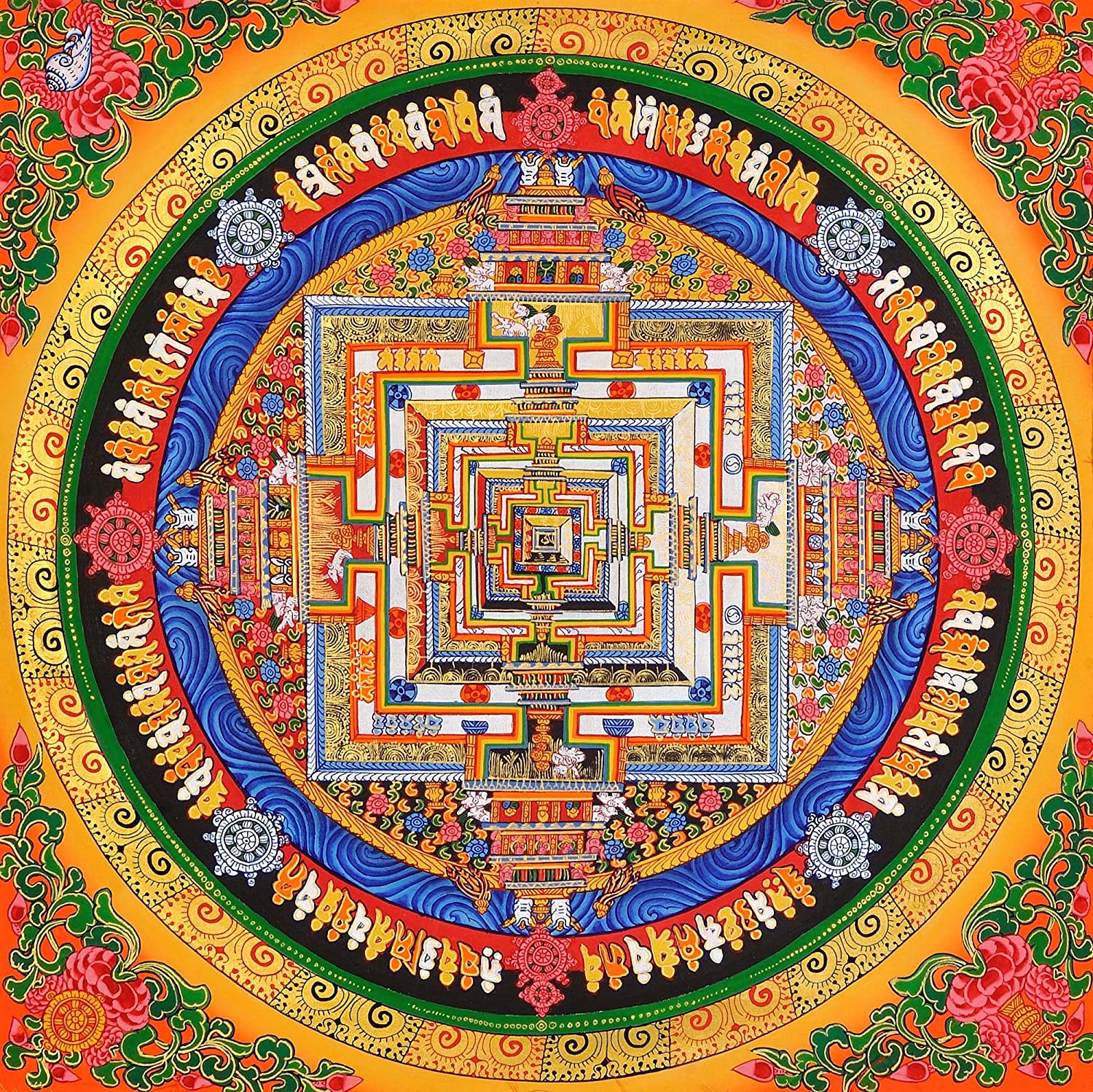
Els centenars de deïtats amb 2 caps i 6 braços és com una mena de rosari. Es resa per que en el moment de la reencarnació, en lloc de tornar a començar el cicle, l’accés al retorn quedi bloquejat i entri al Nirvana. Aquí l’infern no és al més enllà, és la vida normal que tenim. I la pregària un fórmula que es ven com a màgia per evitar que es repeteixi l’infern que vivim. COm en el cas del cristianisme, també és basa en una amenaça de la condemnació eterna.
Si els escrits de l’església, i els concilis, estan tots orientats a assegurar el poder, amb el xantatge de la condemnació eterna i la persecució de la competència dels que anomenen heretges, aquí tenim el xantatge de la condemnació del cicle etern de reencarnacions i la propaganda a buscar un mestre espiritual. Els mestres segueixen altres mestres de més prestigi i s’acaba formant com una estafa piramidal. Si en el cristianisme s’acaba formant una societat sumisa amb el poder, amb la consciència esqueixada entre el que es vol viure i el que exigeix una moral que privilegia el patiment i el martiri, aquí una societat escapista que es tanca a un monestir
[bona part dels textos són “trucs” per trobar la sortida correcta en el moment de transició, com si estiguessim al metro a pl Catalunya i en la confusió poguessim anar cap a una de les diverses línies disponibles, verda, vermella, FGC, Renfe, . Al tantu per ons’escapa la consciència, si surt pel cap, budahood, si pel cul, a l’infern]

